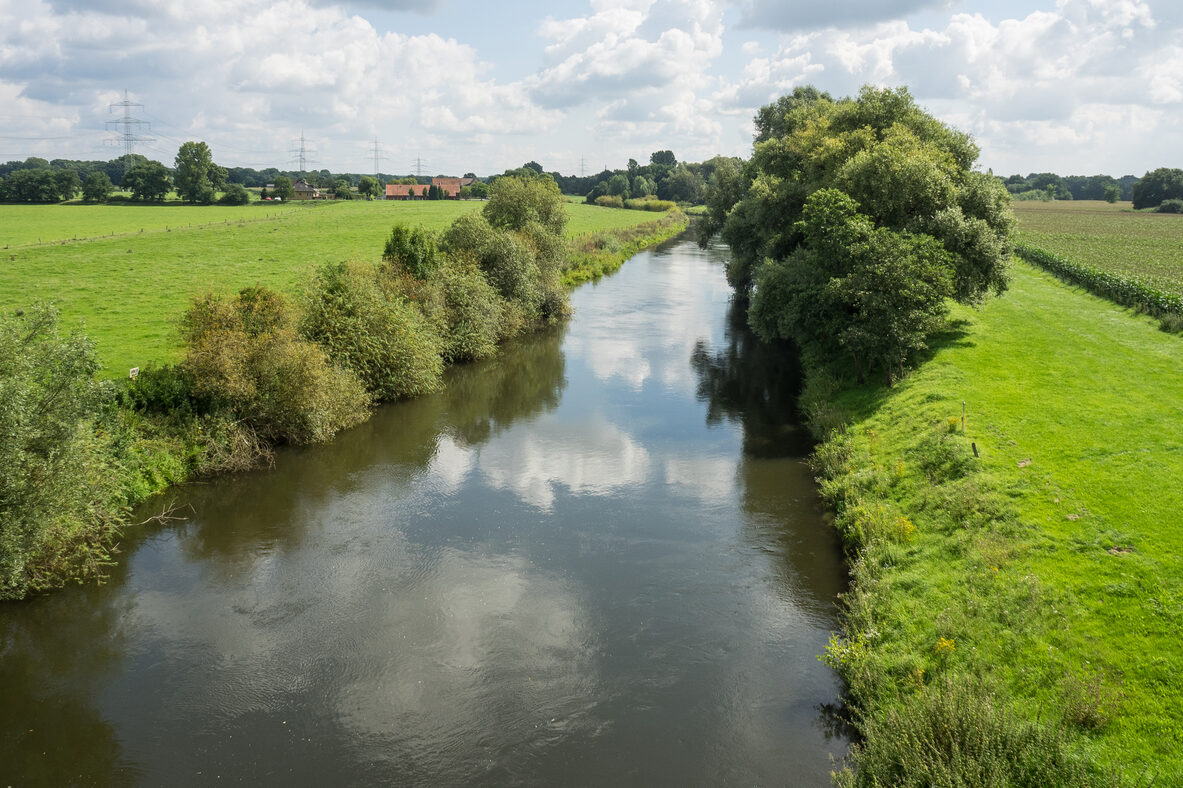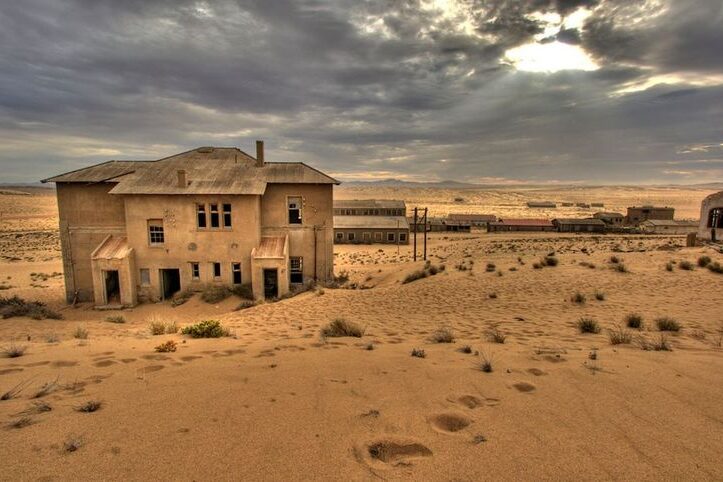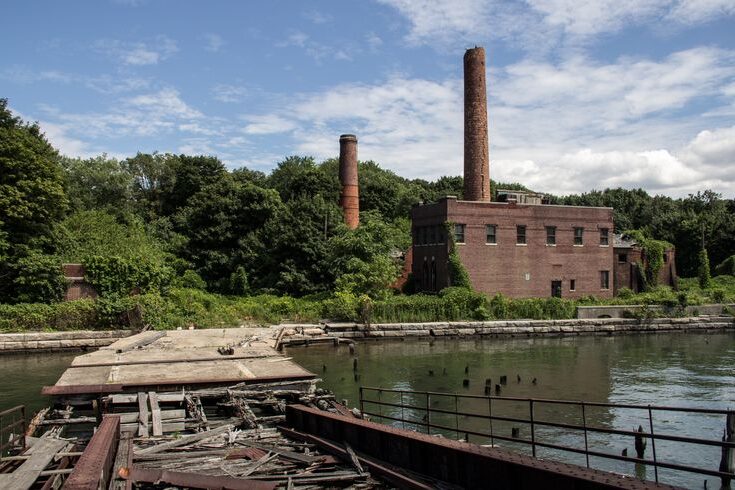1. Emscher River, Germany

Once known as one of Europe’s most polluted rivers, the Emscher in Germany was basically an open sewer running through industrial towns. After decades of neglect, communities launched a massive €5.5 billion project to replace the sewage network and restore natural banks. The aim was to revive wildlife and give people access to clean water and green trails. Today the river is returning to life and attracting birds, fish, freshwater shrimp, and even beavers along its renewed corridors.
Experts say that this transformation proves nature reclamation is possible when we invest in ecological infrastructure and community involvement. Neighborhoods are now linked by 130 km of green pathways where families jog, cycle, or pause to watch wildlife. Cleaner air and water quality improvements are measurable. Local citizens finally experience what a healthy river system can offer. The Emscher revival shows that polluted waterways can come back stronger when given time, effort, and proper planning.
2. Nagdaha Lake, Nepal
Nagdaha Lake in Nepal used to suffer from toxic run‑off filled with nitrates, phosphates, heavy metals, and ammonia. Local scientists and communities worked together to install floating wetland systems built from bamboo, styrofoam, and native plants such as Indian shot and scarlet sage. These floating gardens naturally filter contaminants and release cleaner water back into the lake. Over time, water clarity and oxygen levels have notably improved, and local bird and fish populations are returning to the area.
Professionals highlight this as a prime example of how simple, low‑cost nature‑based treatments can address severe pollution problems. Community volunteers now maintain the floating islands and monitor water quality. The project has inspired similar efforts in nearby countries. That sense of shared ownership has not only restored the lake but also strengthened local stewardship. It stands as proof that environmental recovery is achievable through smart design, local participation, and respect for natural processes.
3. Chesapeake Bay, USA
After decades of pollution from agricultural runoff, sewage, and overfishing, Chesapeake Bay has begun a dramatic recovery. Between 1995 and 2022, nutrient reductions exceeded 80 million pounds of nitrogen and 2.4 million pounds of phosphorus. Scientists have noted improved dissolved oxygen, clearer waters, expanded underwater grasses, and stronger fish and shellfish populations. Habitat restoration including oyster reefs, wetlands, and tree planting plays a central role. State programs use monthly water monitoring to guide interventions.
Experts highlight Chesapeake Bay as one of America’s largest watershed recovery successes. They credit science based nutrient limits such as the Bay TMDL, driven by EPA and federal, state, and local cooperation. Though recent extreme weather slowed progress, long term trends remain positive. Many see it as evidence that ecosystem recovery in heavily used estuaries is possible when communities and regulators commit to consistent action and accountability.
4. Yellowstone National Park, USA
Wolves were reintroduced to Yellowstone in 1995 and early 1996 after being absent for nearly 70 years. Scientists have observed a remarkable ripple effect through the ecosystem. With elk numbers and grazing behavior changed, willow and aspen trees have recovered, allowing streambanks to reforest and stabilize. Beaver populations have increased as more woody habitat became available. Stream health improved along with habitat diversity.
Ecologists point to Yellowstone as one of the clearest real-world examples of trophic cascade. A 2025 study documented a 1 500 percent increase in willow crown volume in northern riparian zones tied to predators returning. Scientists say it proves top predators can rebuild ecosystem complexity, supporting biodiversity and ecosystem services. The Yellowstone recovery underscores how restoring a single species can trigger widespread landscape healing.
5. Ireland’s Raised Bogs, Ireland
In parts of Ireland, EU backed efforts have restored 3000 hectares of raised bog habitat. Projects focused on blocking drainage, raising water tables, and removing invasive plants to allow peatland ecosystems to regenerate. Scientists report the return of bog specialists such as sphagnum mosses, sundews, and dragonflies. Restored peatlands are also reopening bird habitat and increasing carbon storage capacity .
Experts emphasize the importance of collaboration with local farmers and landowners in securing long term success. They note ecological benefits are only sustained when social and economic factors are aligned with restoration goals. Ireland’s peatland comeback is held up as an example of ecosystem recovery balancing environmental and human interests in a realistic and inclusive way.
6. SS Ayrfield, Australia
The SS Ayrfield shipwreck sits in Sydney’s Homebush Bay, where mangroves have colonized its decks and superstructure. What was once decaying steel is now a living tidal forest that supports seabirds, fish, crustaceans, and saltmarsh plants. Marine life feeds and hides in and around the wreck, turning it into an unplanned sanctuary.
Marine biologists highlight this as a natural example of ecological succession. With concrete and steel left untouched, mangroves established themselves and recreated tidal habitat. The site draws attention and inspires interest in ecological recovery by showing that even abandoned industrial structures can serve as wildlife havens if nature is allowed to have free rein.
7. Kolmanskop, Namibia

Kolmanskop was a diamond mining town in the Namib Desert that was abandoned after the resource was depleted. Over time, shifting sand dunes have filled homes and buildings, transforming rooms into desert sculptures. The town is now half submerged in sand, creating dreamy interiors where sand drifts through furniture and windows.
Desert ecologists note this as a striking illustration of nature reclaiming space when human presence is removed. It demonstrates the power of physical processes and landscapes to reclaim built environments. Kolmanskop reminds us that unless maintained, human constructions may not survive the constant work of natural forces.
8. Valley of the Mills, Italy
Hidden in a deep gorge in Sorrento, Italy, the Valley of the Mills is a lush, green ravine where old stone mills have been overtaken by thick vegetation. The buildings were abandoned in the early 1900s, and over time, nature moved in. Ferns, moss, vines, and trees have wrapped themselves around the stone structures, turning them into something out of a fairy tale. It’s quiet, mysterious, and oddly peaceful to witness nature so completely reclaim manmade space.
Ecologists say this is more than just pretty scenery. Microclimates created by the ravine’s shade and humidity have helped rare plant species thrive, while animals use the area as a corridor through the city. Tourists and researchers alike marvel at how fast nature works once humans step aside. This valley is now a symbol of natural resilience and shows what can happen when wild spaces are left to grow without interference or forced development.
9. Ta Prohm Temple, Cambodia
Ta Prohm, one of the temples in Cambodia’s Angkor complex, stands frozen in a timeless battle between architecture and jungle. Massive silk-cotton and strangler fig trees have grown into the walls, roofs, and corridors, their roots wrapping around ancient carvings. Though left partially unrestored to preserve this natural beauty, the temple still invites millions of tourists each year, mesmerized by its haunting mix of manmade history and organic reclamation.
Environmental and cultural conservationists call Ta Prohm a delicate balance. The jungle has reclaimed space, but restoration efforts tread carefully to preserve both the temple’s structure and its wildness. The site illustrates how nature doesn’t just destroy but also transforms. In letting the forest take hold, Cambodia offers a lesson in coexistence, an example of what happens when ancient civilization meets patient, persistent wilderness. It’s a living reminder that nature doesn’t need permission to return. It only needs time and opportunity.
10. Houtouwan Ghost Village, China
On Gouqi Island off China’s eastern coast lies Houtouwan, a village once buzzing with fishing families. By the 1990s, rising economic pressure and limited access forced residents to abandon it. In their absence, ivy, moss, and wild vines overtook the stone houses, curling into windows and blanketing rooftops in a sea of green. From a distance, it almost looks like the village is wearing a forest as camouflage.
Ecologists describe this transformation as passive restoration, no planning, no intervention, just the quiet return of coastal vegetation. Birds and small mammals have reappeared, using the hushed village as a nesting ground. Tourists visit in awe, cameras in hand, drawn to the eerie serenity of nature’s work. Houtouwan proves how coastal ecosystems can regenerate quickly when left alone. It’s a stunning example of environmental rebound, showing us that when human hustle fades, nature doesn’t hesitate to make a graceful, green comeback.
11. Chernobyl Exclusion Zone, Ukraine
When the Chernobyl nuclear disaster struck in 1986, it left a vast exclusion zone that remains largely uninhabited by humans. Surprisingly, the area has since become a haven for wildlife. Wolves, lynxes, wild boar, deer, and even endangered Przewalski’s horses now roam the forests and ruins. Nature, unbothered by fences or fear, has taken over the roads, homes, and villages that once teemed with people.
Radiation levels are still a concern, but researchers say the lack of human disturbance has allowed animals to thrive in ways they couldn’t elsewhere. Some species have even grown in population. This accidental experiment shows that for many creatures, human absence outweighs radioactive risk. Chernobyl is now one of the most unexpected examples of rewilding on Earth. It reminds us that when we step back, even from disaster zones, ecosystems may bounce back faster and fuller than anyone would have dared to believe.
12. Floating Forests of Homebush Bay, Australia
Beyond the SS Ayrfield, Homebush Bay in Sydney holds multiple shipwrecks now transformed by nature. Mangroves and saltmarsh plants have colonized the decks of these abandoned vessels, creating floating forests. What was once an industrial dumping ground now supports fish nurseries, bird habitat, and healthy estuarine systems that filter water and trap carbon in the soil.
Marine scientists see this as spontaneous habitat creation. Over time, these steel skeletons invited natural growth without a blueprint or funding. Environmental groups now use the area to educate the public about restoration and resilience. It’s a lesson in low-cost ecological innovation, where nature does the hard work if left undisturbed. These mangrove-covered wrecks prove that even accidental sanctuaries can provide vital environmental services. Homebush Bay shows that beauty and biodiversity can spring up where you’d least expect it, if we’re wise enough to give it room and let time take the lead.
13. North Brother Island, New York

Just off the coast of the Bronx lies North Brother Island, once home to quarantine hospitals and housing for tuberculosis patients. Abandoned in the 1960s, it has since become a wildlife sanctuary. Buildings are crumbling, overgrown with trees and vines, and nature has made the island its own. It’s now a protected habitat for herons, egrets, hawks, and many migratory birds.
Urban ecologists call this an oasis in the city’s industrial sprawl. While the public isn’t allowed to visit, researchers monitor the wildlife and plant regrowth. The quiet decay has created a rare space where nature flourishes just minutes from New York’s bustling neighborhoods. It’s a reminder that healing doesn’t always need big plans or heavy funding. Sometimes, leaving land alone allows natural rhythms to return. North Brother Island is both haunting and hopeful, proving that even in the heart of the city, nature never forgets how to come back.
